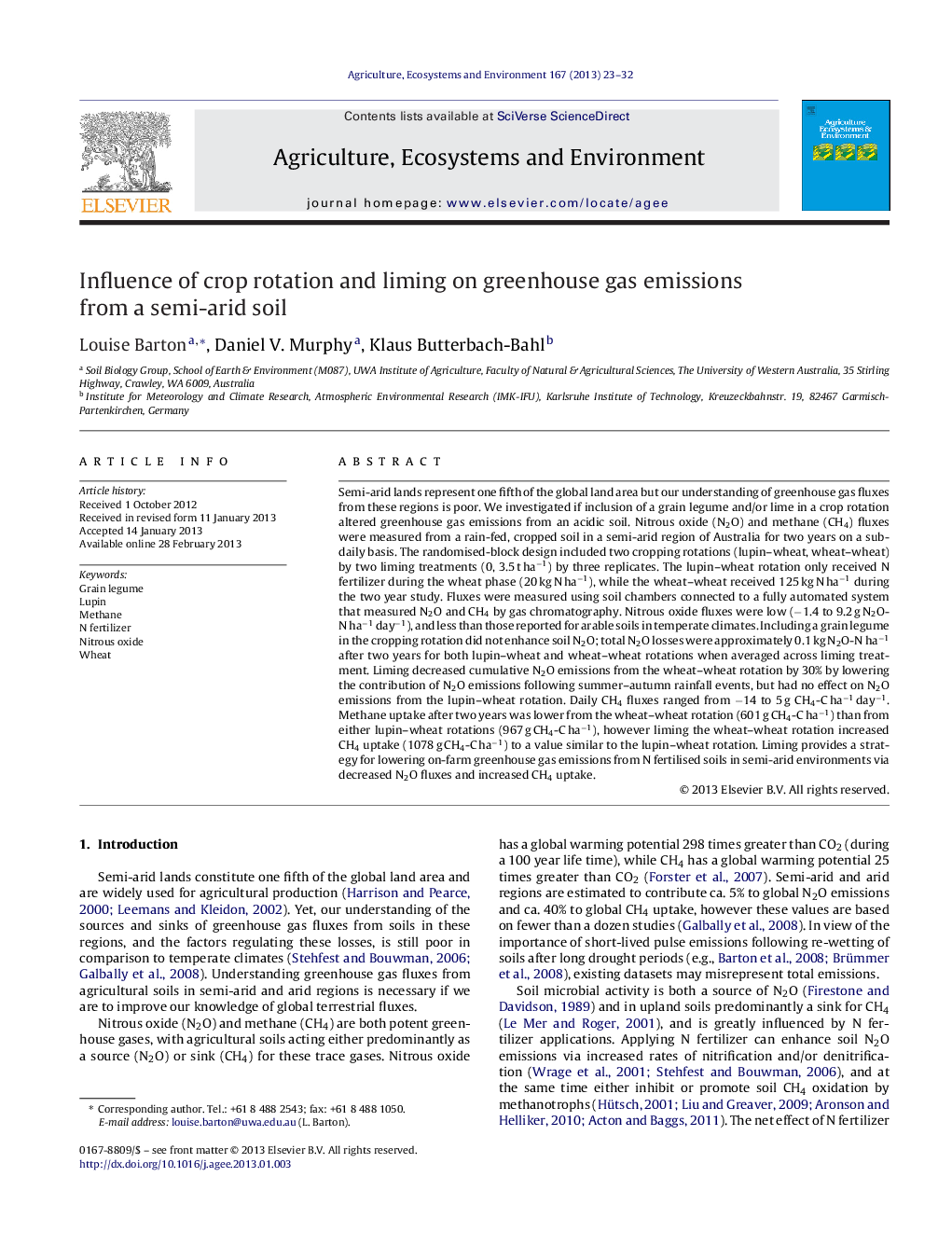| Article ID | Journal | Published Year | Pages | File Type |
|---|---|---|---|---|
| 2414288 | Agriculture, Ecosystems & Environment | 2013 | 10 Pages |
Semi-arid lands represent one fifth of the global land area but our understanding of greenhouse gas fluxes from these regions is poor. We investigated if inclusion of a grain legume and/or lime in a crop rotation altered greenhouse gas emissions from an acidic soil. Nitrous oxide (N2O) and methane (CH4) fluxes were measured from a rain-fed, cropped soil in a semi-arid region of Australia for two years on a sub-daily basis. The randomised-block design included two cropping rotations (lupin–wheat, wheat–wheat) by two liming treatments (0, 3.5 t ha−1) by three replicates. The lupin–wheat rotation only received N fertilizer during the wheat phase (20 kg N ha−1), while the wheat–wheat received 125 kg N ha−1 during the two year study. Fluxes were measured using soil chambers connected to a fully automated system that measured N2O and CH4 by gas chromatography. Nitrous oxide fluxes were low (−1.4 to 9.2 g N2O-N ha−1 day−1), and less than those reported for arable soils in temperate climates. Including a grain legume in the cropping rotation did not enhance soil N2O; total N2O losses were approximately 0.1 kg N2O-N ha−1 after two years for both lupin–wheat and wheat–wheat rotations when averaged across liming treatment. Liming decreased cumulative N2O emissions from the wheat–wheat rotation by 30% by lowering the contribution of N2O emissions following summer–autumn rainfall events, but had no effect on N2O emissions from the lupin–wheat rotation. Daily CH4 fluxes ranged from −14 to 5 g CH4-C ha−1 day−1. Methane uptake after two years was lower from the wheat–wheat rotation (601 g CH4-C ha−1) than from either lupin–wheat rotations (967 g CH4-C ha−1), however liming the wheat–wheat rotation increased CH4 uptake (1078 g CH4-C ha−1) to a value similar to the lupin–wheat rotation. Liming provides a strategy for lowering on-farm greenhouse gas emissions from N fertilised soils in semi-arid environments via decreased N2O fluxes and increased CH4 uptake.
► Including a grain legume in a cropping rotation did not enhance soil N2O fluxes. ► Liming decreased N2O fluxes from wheat–wheat, but not the lupin–wheat rotation. ► Liming decreased total N2O fluxes by lowering fluxes following summer–autumn rain. ► Including a grain legume in the cropping rotation increased CH4 uptake. ► Liming increased CH4 uptake from wheat–wheat rotation.
